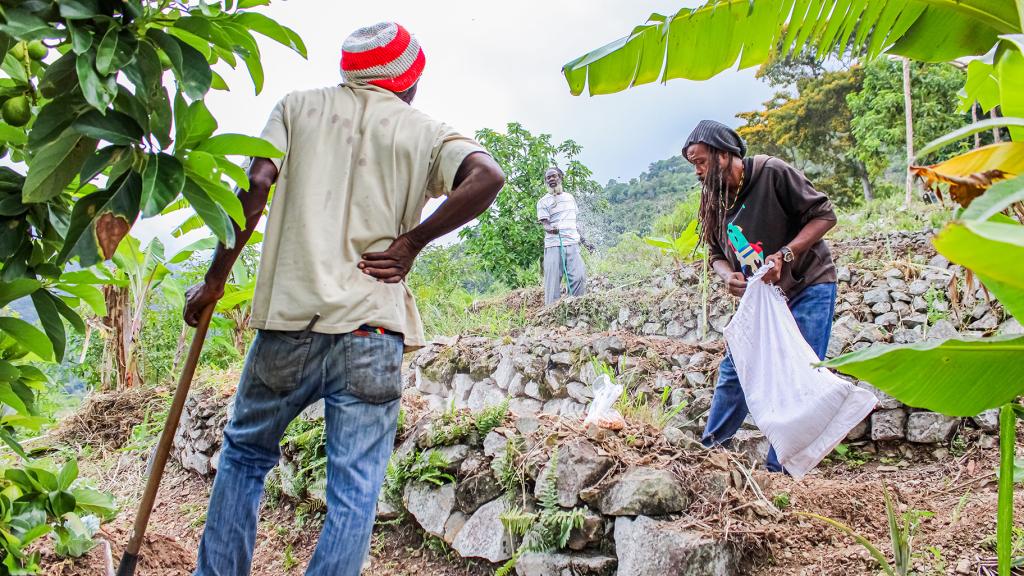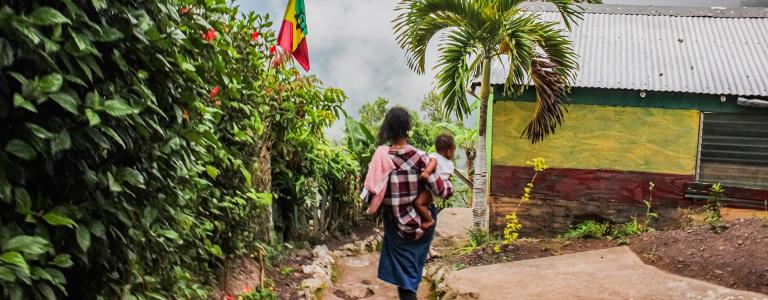Advancing Gender Equality and Human Rights at COP 29: Why intersectionality matters
It is difficult to argue against the idea that we should centre the most vulnerable people in our efforts to manage climate risks and that, often, the most vulnerable people are those who face intersecting forms of discrimination. Yet there has been resistance to integrating intersectionality language in United Nations Framework Convention on Climate Change (UNFCCC) discussions, despite evidence that it is central to just and effective climate action. Angie Dazé explains why intersectionality is a key step toward climate justice.
Intersectional approaches aim to address the complexity of social systems by recognizing the ways in which different structures of inequity—gender inequality, racism, ableism, and ageism, for example—overlap and are interdependent. The term intersectionality was coined by Black feminist Kimberlé Crenshaw in 1989; however, the concept existed previously within certain social movements and in some Indigenous ways of knowing.
Intersectionality shifts the focus from individual identities to structures of inequity, providing the foundation for systemic approaches that address discrimination and injustice.
It is fairly well established that gender inequality is a factor that influences how people experience and respond to climate change, as well as their opportunities to participate in decision making. However, other inequities have typically received less attention, obscuring differences among people of the same gender. It may also mean that we are overlooking other factors—such as being Indigenous or having a disability—that may lead to overlapping forms of discrimination that exacerbate vulnerability to climate change and create barriers to engaging in the solutions. An intersectional approach provides a framework for understanding these interconnected issues and what they mean for climate action.
The concept of intersectionality is becoming more prominent in climate policy discussions. In the UNFCCC, it is showing up more frequently in the negotiations. Notably, it was mentioned in the United Arab Emirates Framework for Global Climate Resilience (UAE FGCR), which emphasizes that adaptation action should be based on and guided by intersectional approaches. It has also been raised in the discussions around the review and update of the Lima work programme on gender and its gender action plan (GAP), where the draft negotiating text that will be further discussed at the 29th UNFCCC Climate Change Conference (COP 29) includes references to intersectionality. However, there has been some resistance to integrating intersectionality language in UNFCCC discussions, with some arguing that it is an academic concept that is not relevant in all country contexts.

Intersectionality is applicable across all areas of climate action, including adaptation, just transition, loss and damage, and climate finance. If we focus specifically on adaptation to illustrate its importance, we cannot deny that structures of inequity, such as colonialism, racism, and ableism, have an influence over people’s vulnerability to climate change and the opportunities they have to adapt. These structures intersect with each other and with gender inequality. Understanding how these intersecting forms of discrimination shape people’s adaptive capacity is fundamental to building resilience in a way that is inclusive and sustainable. This is clearly stated in the latest report on adaptation from the Intergovernmental Panel on Climate Change (IPCC), which affirms that intersectional approaches are central to understanding differential vulnerability.
Though intersectionality may appear to be an academic theory, it is clear that we should centre the most vulnerable people in our efforts to manage climate risks and that often, the most vulnerable people are those who face intersecting forms of discrimination.
And there is scientific evidence that backs up this assertion. Working Group II of the IPCC highlights the ways in which climate risks vary for different people due to intersecting structures of inequity based on gender, ability, and ethnicity, among other factors. It notes that deliberate attention to intersectionality in community engagement for adaptation can help to empower excluded groups and highlight justice issues while advancing local development priorities. It asserts that there is high confidence that intersectionality is important to just environmental policies but that there is limited evidence of its integration in adaptation policies. The IPCC, the most important scientific body on climate change, identifies intersectionality as a “fundamental question” about equity and justice in adaptation.
In fact, adopting an intersectional approach provides more flexibility, as it does not predetermine which groups require particular attention in relation to climate change adaptation. Instead, it allows for analysis to determine which structures of inequity need more consideration in a given context. Using intersectionality as a lens can help us move toward a more nuanced analysis of the power structures and systemic barriers that undermine resilience and inhibit people’s opportunities to participate in climate action. Focusing on these structures of inequity is firmly in line with a gender-responsive and human rights-based approach to adaptation, which is enshrined in the Paris Agreement.
What Needs to Happen at COP 29?
At COP 29, negotiators have an opportunity to ensure that the next phase of the Lima work programme and an updated GAP provide a framework for climate action that confronts the complexity of social systems and centres the people who have the most to lose in a changing climate. Globally, there is progress on integrating gender considerations into climate action. We see it in the establishment of a target for gender-responsive adaptation planning in the UAE FGCR. We see it in countries’ efforts to incorporate gender issues in their nationally determined contributions and national adaptation plans. We see it in the work of gender advocates and women on the frontlines of climate change who are taking action to reduce greenhouse gas emissions and build resilience. But there is more to do, and an intersectional approach will only strengthen these efforts. Ensuring that intersectionality is captured in the Lima work programme, the GAP, and other key decisions coming out of Baku represents a small but important step on the pathway to climate justice.
This article draws on discussions held at a knowledge co-production workshop on intersectionality and climate change adaptation earlier this year. We are grateful to the following individuals who shared their insights and experiences during this event: Joanita Babirye, Gabriela Balvedi Pimentel, Natalie Cleveland, Tsitsi Chataika, Ashlee Christoffersen, Diego De Leon, Ignatius Dube, Kudakwashe Dube, Ivana Feldfeber, Alex Gordon, Menka Kalisha Goundan, Young Hee Lee, Phelister Rosa, and Jhannel Tomlinson.
You might also be interested in
Mobilizing Knowledge on Gender, Equity, and Justice in Climate Change Adaptation
This technical brief summarizes and explains the key messages on gender, equity, and justice from the 2022 Intergovernmental Panel on Climate Change (IPCC) report on impacts, adaptation, and vulnerability.
A Story of Gender, Equity, and Justice in Climate Change Adaptation
This comic illustrates and explains the key messages on gender, equity, and justice from the 2022 Intergovernmental Panel on Climate Change (IPCC) report on impacts, adaptation and vulnerability.
How to Make Nature-Based Solutions for Adaptation Work for Everyone
Effective nature-based solutions (NbS) for adaptation start with integrated climate risk assessments. These take-aways will help practitioners plan for inclusive and sustainable NbS.
For Nature-Based Solutions to Be Effective, We Need to Work with Indigenous Peoples and Local Communities
Nature-based solutions have been praised as a promising approach to tackling the twin crises of climate change and biodiversity loss. But some Indigenous Peoples and local communities are questioning the legitimacy of the concept and what it symbolizes. It is time to listen to what they have to say.
